Finding cervical lymphadenopathy
The next step is to look for lymphadenopathy in the neck. A good technique is essential. It is also important that you cover all the areas where lymph nodes are found.
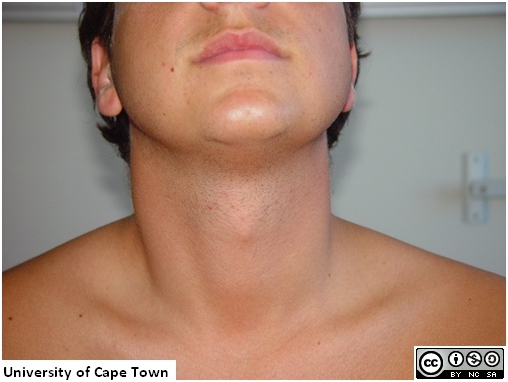
| AFRIKAANS | TRANSCRIPT | XHOSA |
|---|---|---|
| I?d like to examine your neck for any swelling./ Ek wil graag u nek ondersoek vir enige swelling. / Ndicela ukukuxilonga intamo ndive ukuba akuna ndawo zidumbileyo na. | ||
| I will ask you to turn your head to the left and right./ Ek gaan u vra om u kop na links en na regs te draai. / Khawujikise intloko yakho ijonge ekhohlo nasekunene. | ||
| Please let me know if you feel any pain when I touch you./ S?asseblief vir my indien u enige pyn ervaar wanneer ek u ondersoek. / Ndicela undixelele xa usiva kabuhlungu xa ndikuphatha. |
From the front, all the following areas must be carefully examined.
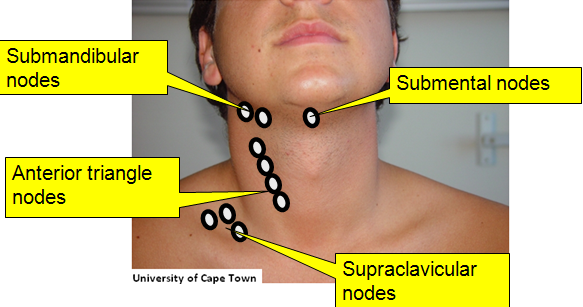
Of course, you must examine both sides...
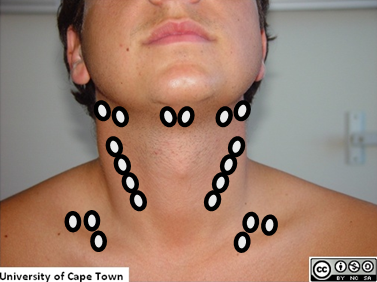
Less common but occasionally important lymph nodes may be found in the preauricular region...
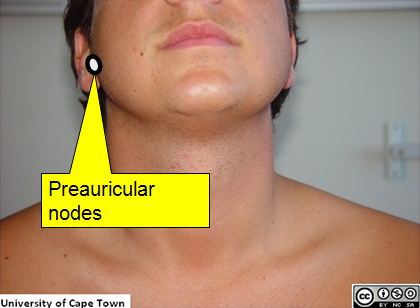
And in the space between the sternal and clavicular heads of the left sternocleidomastoid muscle (the Virchow-Trousier lymph node).
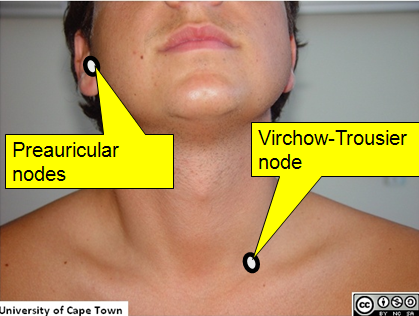
Posteriorly, you need to palpate the areas where the following important groups of nodes are found...
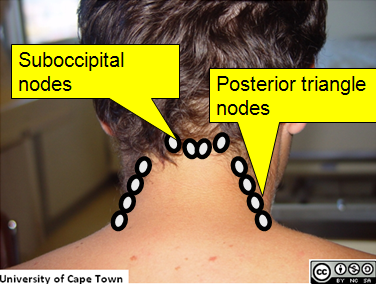
The technique of palpating lymph nodes is crucial. It should be done exactly as shown here. That is: a soft, gentle rolling of the fingertips over the skin. It is a rolling action, not a jabbing.
Begin by palpating the submandibular lymph nodes on one side...
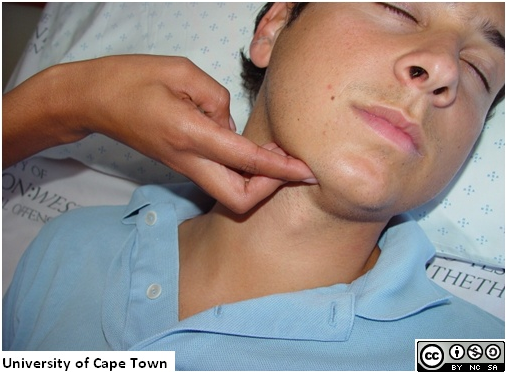
| AFRIKAANS | TRANSCRIPT | XHOSA |
|---|---|---|
| Turn your head to the left please./ Draai asseblief u kop na links. / Khawujongise intloko yakho ekhohlo. |
then the submental lymph nodes...
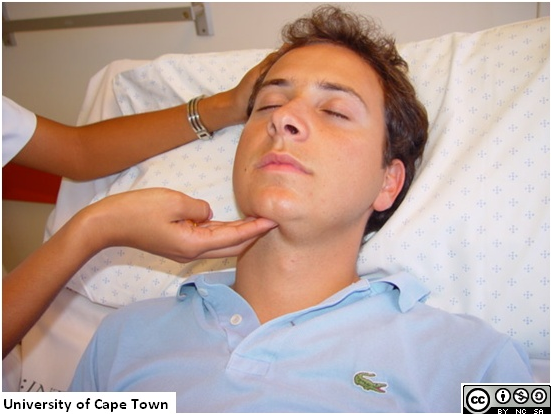
| AFRIKAANS | TRANSCRIPT | XHOSA |
|---|---|---|
| Keep your head straight./ Hou asseblief u kop reguit. / Ndicela uyimise nkqo. |
And then the anterior triangle.
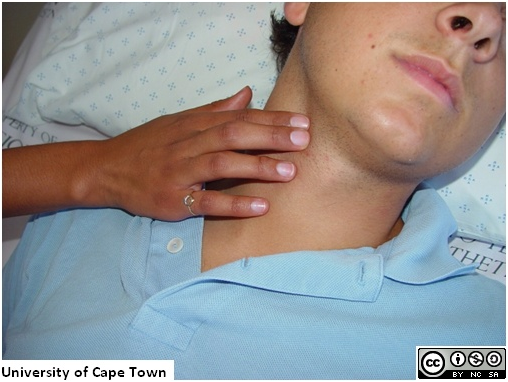
Watch how the submandibular, submental and anterior triangle lymph nodes are palpated. (Notice how the other hand supports the patient?s head.)
Repeat this sequence on the other side of the neck.
| AFRIKAANS | TRANSCRIPT | XHOSA |
|---|---|---|
| Turn your head to the right please./ Draai asseblief u kop na regs. / Khawujongise intloko yakho ekunene. |
Now examine the suboccipital region and posterior triangles. These are easily examined on both sides simultaneously, using both hands, as shown here.
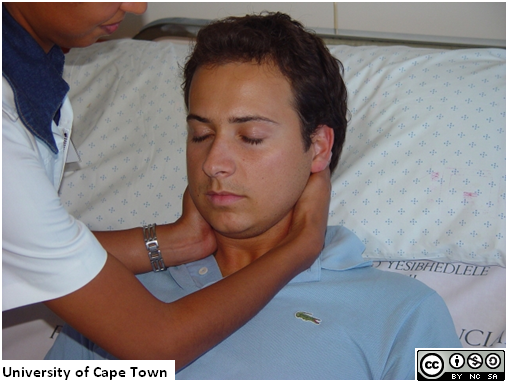
| AFRIKAANS | TRANSCRIPT | XHOSA |
|---|---|---|
| I am going to feel the back of your head and neck./ Ek gaan die agterkant van u kop en nek ondersoek. / Ndiza kuva ukuba kunjani na apha emva kwentloko nasentanyeni. |
To examine for suboccipital lymph nodes, you may have to ask your patient to lift his head off the pillow.
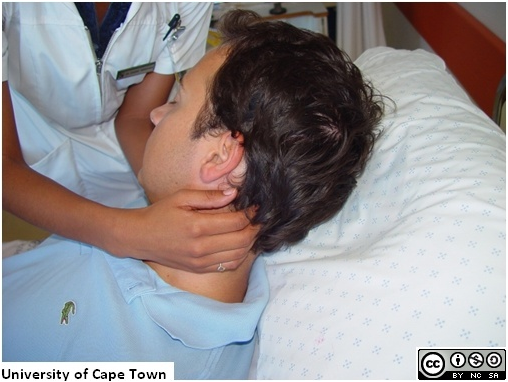
Watch this again. Once again note the gentle, rolling action of the fingers.
Here the patient is examined for posterior triangle and suboccipital adenopathy.
Next you must examine both supraclavicular fossae for lymph nodes.
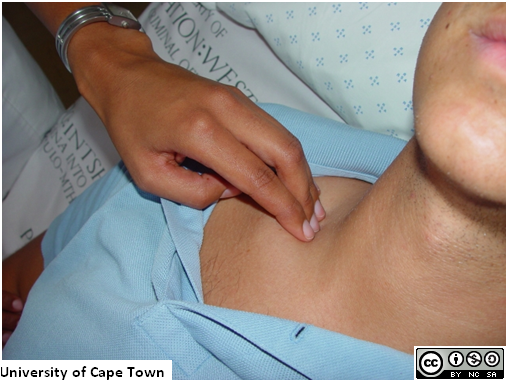
| AFRIKAANS | TRANSCRIPT | XHOSA |
|---|---|---|
| I am nearly finished./ Ek is amper klaar. Sendiza kugqiba. | ||
| I need to feel around your collar bone./ Ek moet die limfkliere by u sleutelbeen ondersoek. / Ndicela ukuva apha malunga nengqosha. | ||
| May I move your clothes?/ Mag ek u klere wegtrek? / Ndingatyhila impahla yakho? |
Either use one hand at a time, or use both hands and examine both supraclavicular fossae simultaneously. Note how clothing must be moved to allow free access. If the top is too tight for this, then it should be removed and the upper chest exposed.
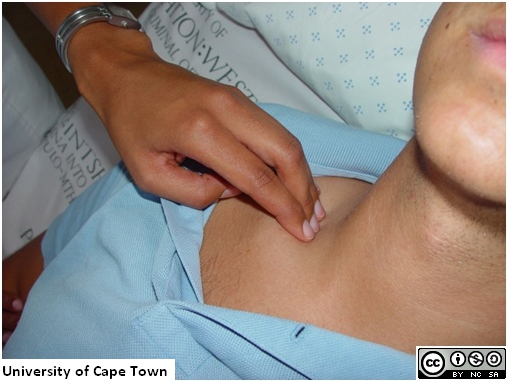
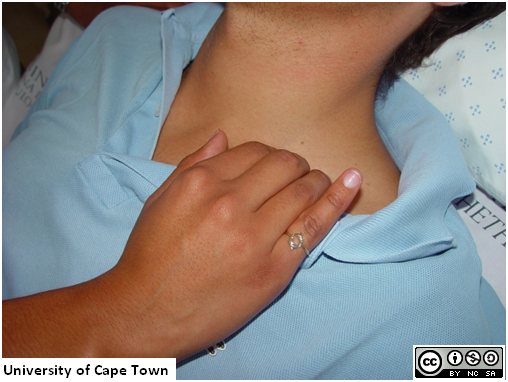
Here the examiner palpates the supraclavicular fossae for nodes.
Now palpate for preauricular nodes...
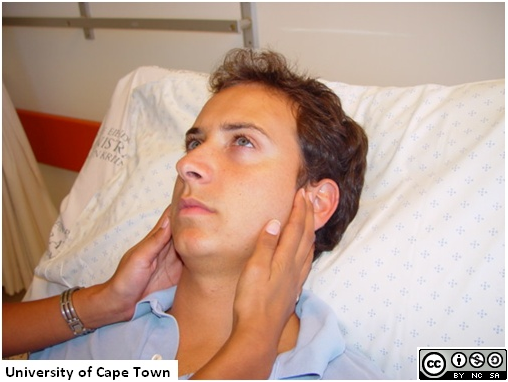
And finally for the Virchow-Trousier node.
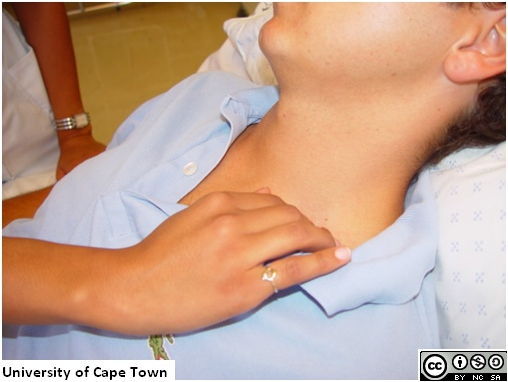
Here the examiner looks for preauricular nodes and for a Virchow-Trosier node.
